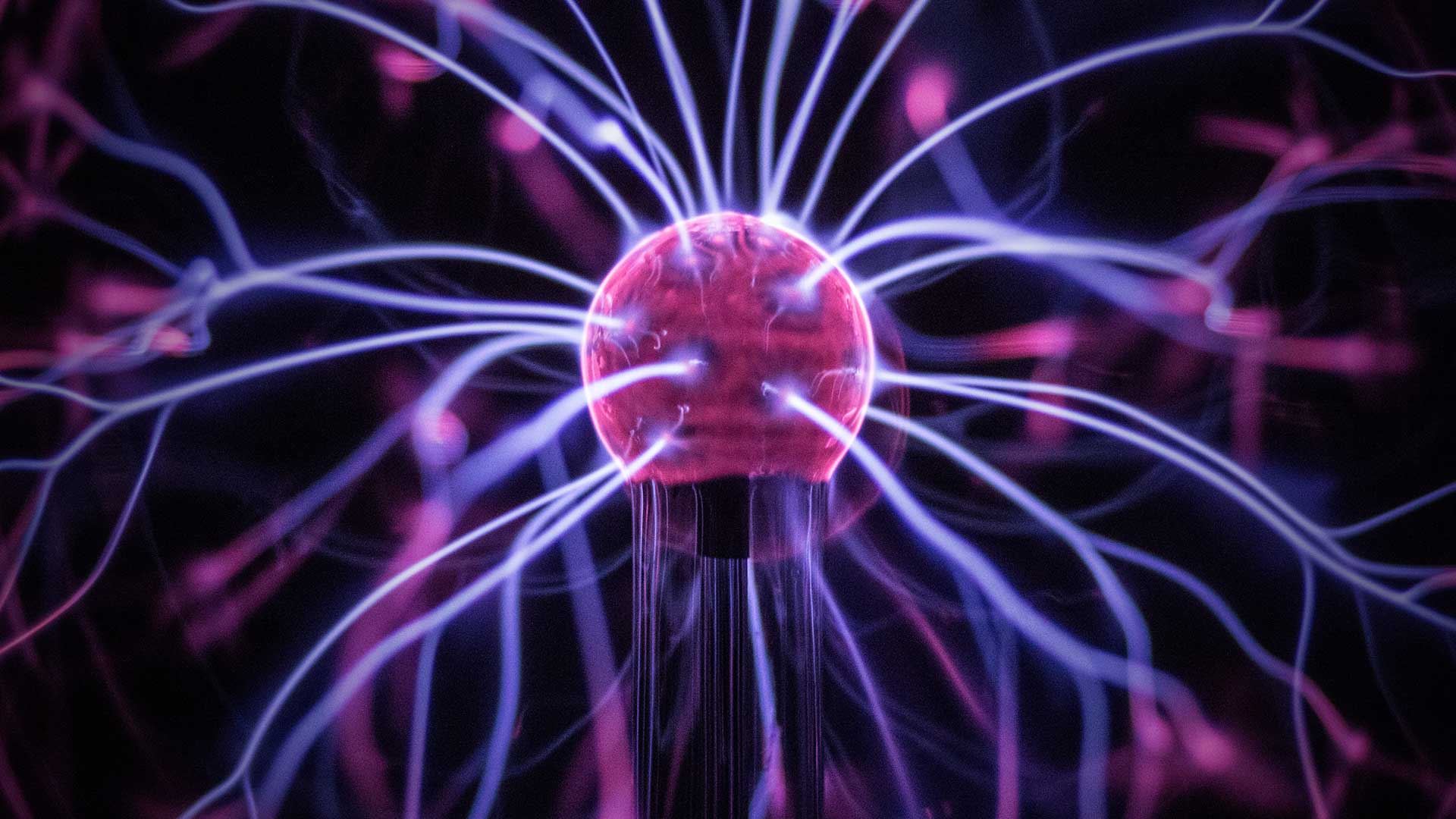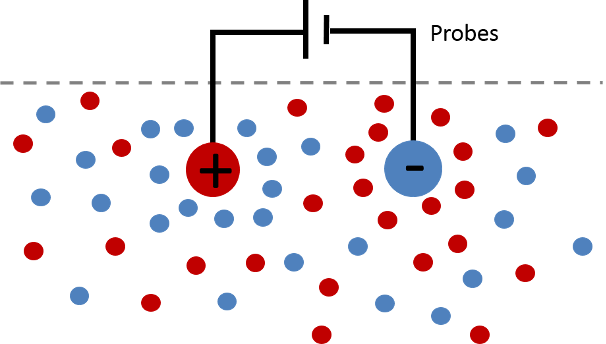

Cosmox Blogs
Plasma: The Universe’s Fourth State of Matter
Whenever you look at the night sky you see so many stars, a light that reflects the Universe. You might think about the immensity of the universe—how vast and ancient it is compared to the everyday concerns of life. Here is a fun fact: these bright stars are made of plasma, what we know as the fourth matter of the Universe. In fact, 99% of the visible Universe is in this fourth matter state, but ironically it is rare on Earth.
After solid, liquid, and gas you get plasma. If you look for a pattern, you can observe that each of these states is getting heated up to get to a looser state of particles. Thus, heating ice produces liquid, heating water produces water vapor, and heating water vapor to a specific temperature produces plasma. Plasma is just like a gas, but it carries electricity because the particles in plasma interact through electric charge. It is difficult to contain because it is not a stationary object and is always moving and dancing.

When thermal or electric energy in a gas reaches a temperature of 5,000 to 10,000 degrees, the absorbing electrons gain kinetic energy. This kinetic energy enables the electrons to overcome the electrostatic force and leave the ions (positive charge) behind. After splitting apart, they travel at such high speeds that they occasionally unite with other ions to form atoms or simply remain in an ionized state. Getting every atom to ionize is extremely difficult and requires a significant amount of energy. One type of plasma, which is composed of real electricity, is neon. Where electric charge runs through neutral gas, and only a fraction of the neon tube gets ionized.
You may be wondering how light originates from in plasma. Well, it comes from a process known as recombination. When an electron gains momentum and gets to the orbit of another proton, it releases a photon, or light, which gives rise to the color you see. A similar process occurs in lightning, as gas breaks down between the ground and the gas or even between two clouds. Light is produced when the electrons that have been stripped from the gas return to their orbits around ions. A typical case of charged electrons returning to their orbits and producing different colors of light is the aurora; these electrons originate from the geomagnetic field lines, which are located at equatorial distances of 4-5 Earth radii (Re).

Gas particles, liquid particles, and solid particles bounce into each other and disperse, especially gasses and liquids because they are mostly neutral and can easily interact with neighbors. Whereas plasma has different properties the particles in it don't hit each other because each particle has an electric field, so they interact and exchange information using their electric charges while being in an approximation of a distance. So plasma is just coulomb collision or collision at a distance.

Plasma physics is not a precise science, it is a combination of different idea’s which are being overlapped, resulting in the modeling of plasma’s behavior. This plasma can be evaluated using two methods Maxwell’s equation and Lorentz's equation.



Averaging the Lorentz force for sub-groups of particles, which includes:
-> Vlasov theory - average over all particles of a given species (electrons or ions) having the same velocity at a given location and characterized using the distribution function fσ(x, v, t).
-> Two-fluid theory - average velocities over all particles of a given species at a given location and characterize the plasma using the species density, mean velocity, and pressure defined relative to the species mean velocity.
-> Magnetohydrodynamic theory - average momentum over all particles of all species and characterize the plasma using the center of mass density, the center of mass velocity, and pressure defined relative to the center of mass velocity.
The assumption about time, space, and velocity.
In plasma, the deviation from charge neutrality must be very small, or in other words, the electrons and ions must be approximately the same. The charge neutrality is mostly satisfied because most ionization processes make an equal number of ions and electrons. This leads to two fundamentals of plasma physics.
Debye Shield
Consider a finite temperature. Plasma has an equal number of electrons and ions, and is not in thermal equilibrium(all parts of plasma have the same temperature). This means that each particle has random thermal motion, which makes small fluctuations in the positions, velocities, or energies of the particle.
Imagine that you have a box filled with plasma, which has the conditions above. If you add a test particle in the box, which is an ion (positive charge). Particles having the same polarity would repel and opposite polarity would attract. This will create a potential in the plasma. There will be displacement in the particle because of attract and repel, that displacement is called shielding or screening. This results in a cloud of electrons surrounding the test particle. The cloud of opposite polarity of the test particle, the cloud potential will partially cancel the test particle potential, located in Poisson’s equation.

Quasi Neutrality
Considering that the Debye length(describes the distance over which electric fields caused by a charge in a plasma are screened or shielded) has microscopic length, comparing this to the size of plasma it shows that plasma remains extremely close to neutral, but exactly not. Science shows that any reasonable configuration of any electric field can easily produce tiny deviations from perfect neutrality.
So believable plasma is quasi-neutral because it doesn’t have sufficient internal energy to become substantially non-neutral for distances greater than a Debye length.
Plasma Magnetic Field
Throughout the universe, the plasma interacts with solid bodies, magnetic fields, other plasma populations, magnetic radiation, magnetohydrodynamic waves, etc. These could be small-scale and large-scale. It is also interesting to see that the magnetic field allows two different plasma’s to communicate, as the magnetic field lines connect different plasma’s together. Communicate means that it allows the plasma to transport currents, electric fields, and waves between the two. This is called electromagnetic interaction, where the plasma is coupled electromagnetically.

One of the best examples of electromagnetic interaction is Earth’s magnetosphere and ionosphere where there is the transfer of mass, momentum, and energy between each other. It is a ‘doughnut-shaped’ region, a region between the magnetosphere and the ionosphere called the plasmasphere. It is filled with trapped ions and electrons of ionospheric origin, and the inner magnetosphere where the energy is less than 1-2 eV. In this context Ionospheric potential affects the magnetosphere and vice versa through field-aligned currents, enabling the exchange of energy and momentum between these regions; this Interaction plays an essential role in creating aurora.

Plasma undergoes a unique, explosive phenomenon called Magnetic reconnection. As we know, magnetic fields are made of field lines, which have a flow of ions and electrons going through these invisible lines. But when two magnetic fields that have opposite directions come close to each other, they get tangled in an X shape, and then the X-shaped entanglement breaks into 2 pieces and pairs the opposite magnetic charge forming a U-shape, after these two formed shapes repel each other. This realignment in Magnetic reconnection happens at an explosive snap. This transfers energy and sends nearby plasma particles flying through space. This Magnetic reconnection triggers solar flares on the surface of the sun, creating shockwaves near supernovae and this violently twists plasma as if around black holes. When this happens on Earth there is a push toward the poles, triggering auroras. All this is studied by ‘Magnetospheric Multiscale Mission’ also known as MMS has 4 identical spacecraft.

Conclusion
Plasma is the fourth state of matter, consisting of a collection of free-moving ions and electrons. Unlike solids, liquids, and gasses, plasma does not have a definite shape or volume. It is electrically conductive, allowing it to generate and respond to magnetic and electric fields. It has Fundamental properties, the main one being Quasi-neutrality and Debye Shield. Plasma is found naturally in stars, including the Sun, and is also present in phenomena like lightning and auroras. It plays a vital role in various industrial applications, such as in fluorescent lights and plasma TVs, and is a key focus in the pursuit of nuclear fusion energy.

Cosmox Blogs
A non profit organization that works on writing and delivering blogs on cosmology, natural sciences & environment, so that people can learn more about it. We even run a forums page, where our users interacts with each other and discuss about Cosmology, Natural Sciences & Astronomy. We even run an instagram and a youtube channel with podcasts.